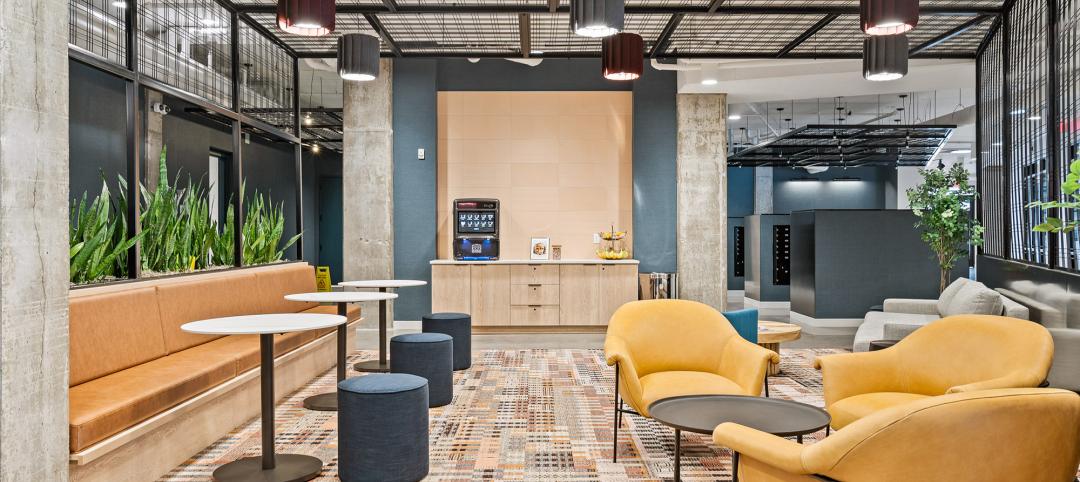Like the familiar adage, “Which came first, the chicken or the egg?,” every building project starts with the same conundrum: Should the client and its design team establish a budget and design a building which meets that budget, or should the team design a project and hope that it fits the budget which the client has set aside for the project
The simple truth is that the concept for every building, and its corresponding program, predates the expense for that building. And if an owner didn’t need the building, there would be no design and there would be no cost. But it’s also true that, as soon as an owner decides to embark on a project, it’s critical to establish the financial benchmarks to verify the viability of the endeavor.
But, for a number of reasons, things don’t always go as planned. One reason is that owners don’t always communicate clearly with their design teams at the outset of projects. For example, several years ago, we were on a design team that presented a concept design to a nonprofit institution for its new building. After weeks of design work, including a pricing exercise, the administrators told us that the project cost was significantly higher than they could afford. They probably had a number in their heads all along, but they had not shared it with the design team in advance. To reduce the cost, the staff had to reprogram the building and the architects had to redesign it.
Obviously, it’s much better if all stakeholders agree to certain parameters before starting any work, especially when a budget is firm. So even if your client does not share its budget with the design team early in the process, don’t assume there is no cap on the cost.
Cost estimates from a napkin sketch?
Even though it’s necessary to produce estimates during the early planning and master planning phases of projects, that process can be tricky, especially if the design team has little information to go on. In extreme cases, clients have asked us to provide estimates based on no more than just napkin sketches. In those cases, all the design team and owner can do is discuss the high-level cost drivers because you can’t do quantity take-off of materials at that point in the project. Such exercises are not always clear or beneficial for the client or the team.
Still, even preliminary estimates based on known parameters can still be useful to demonstrate the implications and challenges of implementing broad conceptual ideas. On one occasion, while we were working on a master planning exercise, the designers produced several schemes in order to pinpoint a potential range of costs. It became apparent that the owner was looking to bracket the highest and lowest costs related to different scopes of work. We quickly provided a throughline of financial understanding for these scopes and costs. It didn’t even require an extensive process.
As this last example illustrates, there’s usually a bit of give and take on cost, even though the client and design team might have to make some compromises. Currently, we’re assisting on a master plan for a county agency. In order to build consensus for a plan that meets the county’s budget, the design team is spending a lot of time determining what the stakeholders want.
For the purposes of identifying the cost, and because there are limitations on the budget, we’re honing into what they need as opposed to what they want to have. It’s good to know the cost implications of these two choices because they’re probably not the same.
We find that it’s even more critical to engage in a meaningful dialogue with the owner and consultant team in cases like this when the outlines of a project are still a little blurry around the edges. In fact, the less established criteria that’s available, the more important it is for the design team to ask the right questions of the owner and listen closely. As we gain a better understanding of the essential program needs, we can benchmark the budget earlier and more accurately.
Providing a high-level understanding of the costs required to meet basic programmatic needs does not need to be an exhaustive exercise. It’s critical to any project, with the exception of those rare owners who can afford not to know–if there really is such a thing. Rather, as a DLR Group colleague once expressed to me, the “form follows funding” approach is the reality for most, particularly institutional and public-sector clients. For our part, we enlist many strategies: published resources; our own 20-year historic database; and our teams’ insight and experience that allows our group to accurately predict costs.
That being said, it’s a bit of a misnomer to answer our original question about which comes first. Designing and budgeting are iterative, interconnected processes that should unfold in tandem as early as possible. As our clients will attest, we believe and enjoy establishing a system of frequent and effective communications throughout the project so that the design team and the owner will be aligned all the way through for success.
About the Author
Victoria Cabanos, Founding and Managing Principal of the Stuart-Lynn Company, is a trained architect and construction professional with over twenty five years of experience in the construction industry. She has worked on a variety of project types in a diversity of roles, including project architect, production engineer, construction supervisor and project manager. With an extensive knowledge of materials and methods and an integrated understanding of the entire construction process she has successfully demonstrated a skill set which includes designing, directing, budgeting, scheduling, resource management and vendor contract negotiations within aspects of the construction industry. She has managed numerous complex project teams, and has brought essential quality management services to the work, while keeping it firmly on budget and schedule. Her in-depth understanding of and familiarity with all aspects of construction afford her an overview of the work that allows for the best determination of priorities. She has also provided valuable insight for lease negotiation and contract development early on in the design process, and has ensured that the most qualified selection of contractors has been reviewed and evaluated for competency and compatibility. Victoria is also an accomplished professional woodworker and the managing partner in her own woodworking firm.
Related Stories
Multifamily Housing | Apr 12, 2024
Habitat starts leasing Cassidy on Canal, a new luxury rental high-rise in Chicago
New 33-story Class A rental tower, designed by SCB, will offer 343 rental units.
Construction Costs | Apr 11, 2024
Construction materials prices increase 0.4% in March 2024
Construction input prices increased 0.4% in March compared to the previous month, according to an Associated Builders and Contractors analysis of the U.S. Bureau of Labor Statistics’ Producer Price Index data released today. Nonresidential construction input prices also increased 0.4% for the month.
K-12 Schools | Apr 10, 2024
A San Antonio school will provide early childhood education to a traditionally under-resourced region
In San Antonio, Pre-K 4 SA, which provides preschool for 3- and 4-year-olds, and HOLT Group, which owns industrial and other companies, recently broke ground on an early childhood education: the South Education Center.
University Buildings | Apr 10, 2024
Columbia University to begin construction on New York City’s first all-electric academic research building
Columbia University will soon begin construction on New York City’s first all-electric academic research building. Designed by Kohn Pedersen Fox (KPF), the 80,700-sf building for the university’s Vagelos College of Physicians and Surgeons will provide eight floors of biomedical research and lab facilities as well as symposium and community engagement spaces.
K-12 Schools | Apr 10, 2024
Surprise, surprise: Students excel in modernized K-12 school buildings
Too many of the nation’s school districts are having to make it work with less-than-ideal educational facilities. But at what cost to student performance and staff satisfaction?
Cultural Facilities | Apr 8, 2024
Multipurpose sports facility will be first completed building at Obama Presidential Center
When it opens in late 2025, the Home Court will be the first completed space on the Obama Presidential Center campus in Chicago. Located on the southwest corner of the 19.3-acre Obama Presidential Center in Jackson Park, the Home Court will be the largest gathering space on the campus. Renderings recently have been released of the 45,000-sf multipurpose sports facility and events space designed by Moody Nolan.
MFPRO+ New Projects | Apr 8, 2024
Construction complete on The Station Apartments in Minneapolis
Big-D Midwest recently completed construction on The Station Apartments at Malcolm Yards, an innovative and unique housing property in Minneapolis.
Green | Apr 8, 2024
LEED v5 released for public comment
The U.S. Green Building Council (USGBC) has opened the first public comment period for the first draft of LEED v5. The new version of the LEED green building rating system will drive deep decarbonization, quality of life improvements, and ecological conservation and restoration, USGBC says.
Codes and Standards | Apr 8, 2024
Boston’s plans to hold back rising seawater stall amid real estate slowdown
Boston has placed significant aspects of its plan to protect the city from rising sea levels on the actions of private developers. Amid a post-Covid commercial development slump, though, efforts to build protective infrastructure have stalled.
Adaptive Reuse | Apr 5, 2024
McHugh Construction completes restoration of Chicago’s historic Ramova Theatre
Adaptive reuse project turns 1929 cinema into a live performance venue, adds a brewery and a taproom, and revives the Ramova Grill in Chicago’s Bridgeport neighborhood.

















